

Tránsitus Mariae. Apócrifo de la Asunción de la Virgen María. Nota: El Papa Juan Pablo II señaló en una catequesis del 9 de julio de 1997 que el primer testimonio de la fe en la Asunción de la Virgen aparece en los relatos apócrifos, titulados “Transitus Mariae” , cuyo núcleo originario se remonta a los siglos II y III.
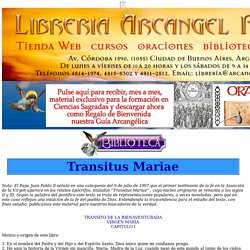
Según la palabra del pontífice este texto se trata de representaciones populares, a veces noveladas, pero que en este caso reflejan una intuición de la fe del pueblo de Dios. Entendiendo la trascendencia para el estudio del texto, con fines estudio, publicamos este material para nuestros buscadores de la verdad. Motivo y origen de este libro 1. En el nombre del Padre y del Hijo y del Espíritu Santo, Dios único quien mi confianza pongo. 2. CAPITULO II Viaje de María a Bethlehem 1. Old Testament messianic prophecies quoted in the New Testament.
Jewish scripture hello quoted to support the claim that Jesus is the Messiah The New Testament frequently cites Jewish scripture to support the claim of the Early Christians that Jesus was the promised Jewish Messiah, but only a handful of these citations are actual predictions in their original contexts.
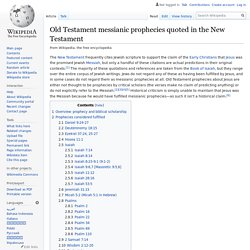
The majority of these quotations and references are taken from the Book of Isaiah, but they range over the entire corpus of Jewish writings. Jews do not regard any of these as having been fulfilled by Jesus, and in some cases do not regard them as messianic prophecies at all. Old Testament prophecies about Jesus are either not thought to be prophecies by critical scholars (the verses make no claim of predicting anything) or do not explicitly refer to the Messiah.[2][3][4][5] Historical criticism is simply unable to maintain that Jesus was the Messiah because he would have fulfilled messianic prophecies—as such it isn't a historical claim.[6] Christian Apocrypha and Early Christian Literature. Archive Notes A wide range of texts -- some showing Gnostic tendancy or influence -- survived within the Christian tradition outside of the New Testiment canon.
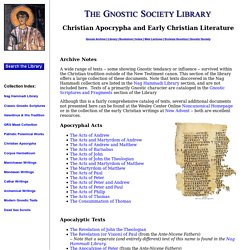
This section of the library offers a large collection of these documents. Note that texts discovered in the Nag Hammadi collection are listed in the Nag Hammadi Library section, and are not included here. Texts of a primarily Gnostic character are cataloged in the Gnostic Scriptures and Fragments section of the Library Although this is a fairly comprehensive catalog of texts, several additional documents not presented here can be found at the Wesley Center Online Noncanonical Homepage or in the collection of the early Christian writings at New Advent -- both are excellent resources. Apocryphal Acts Apocalyptic Texts Apocryphal Gospels. Primera Orden de San Francisco. La Primera Orden de San Francisco es una orden de la Iglesia católica fundada por san Francisco de Asís en 1209.
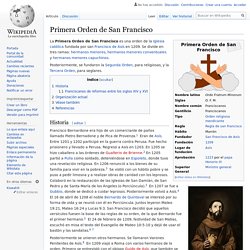
Se divide en tres ramas: hermanos menores, hermanos menores conventuales y hermanos menores capuchinos. Posteriormente, se fundaron la Segunda Orden, para religiosas, y la Tercera Orden, para seglares. Historia[editar] Francisco Bernardone era hijo de un comerciante de paños llamado Pietro Bernadone y de Pica de Provenza.[1] Eran de Asís.
Entre 1201 y 1202 participó en la guerra contra Perusa. Posteriormente se unieron otros hermanos. Francisco conoció al cardenal Hugolino, obispo de Ostia y Velletri, en 1216.[12] En 1217, durante la festividad de Pentecostés, se celebró el primer capítulo general en Porciúncula y la orden dividió su territorio en 12 provincias. Francisco falleció en 1226. Bábism. Abrahamic monotheistic religion Founded in 1844, Bábism flourished in Persia until 1852, then lingered on in exile in the Ottoman Empire, especially Cyprus, as well as underground.
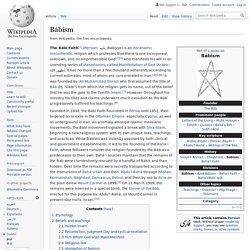
An anomaly amongst Islamic messianic movements, the Bábí movement signaled a break with Shia Islam, beginning a new religious system with its own unique laws, teachings, and practices. While Bábism was violently opposed by both clerical and government establishments, it led to the founding of the Baháʼí Faith, whose followers consider the religion founded by the Báb as a predecessor to their own. Baháʼí sources maintain that the remains of the Bab were clandestinely rescued by a handful of Bábis and then hidden. Etymology[edit] Bábism, a term originating from Orientalists rather than the followers of the religion, comes from the Perso-Arabic noun bab (Arabic: باب), meaning gate. Beliefs and teachings[edit] The Báb's teachings can be grouped into three broad stages which each have a dominant thematic focus. Inicie su camino espiritual.